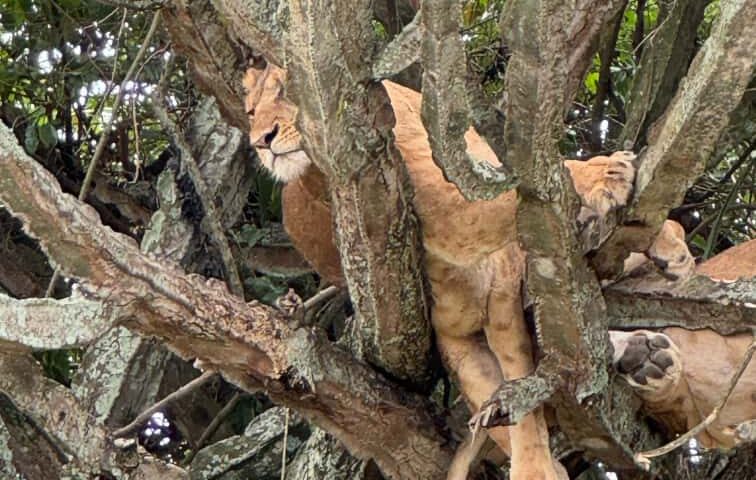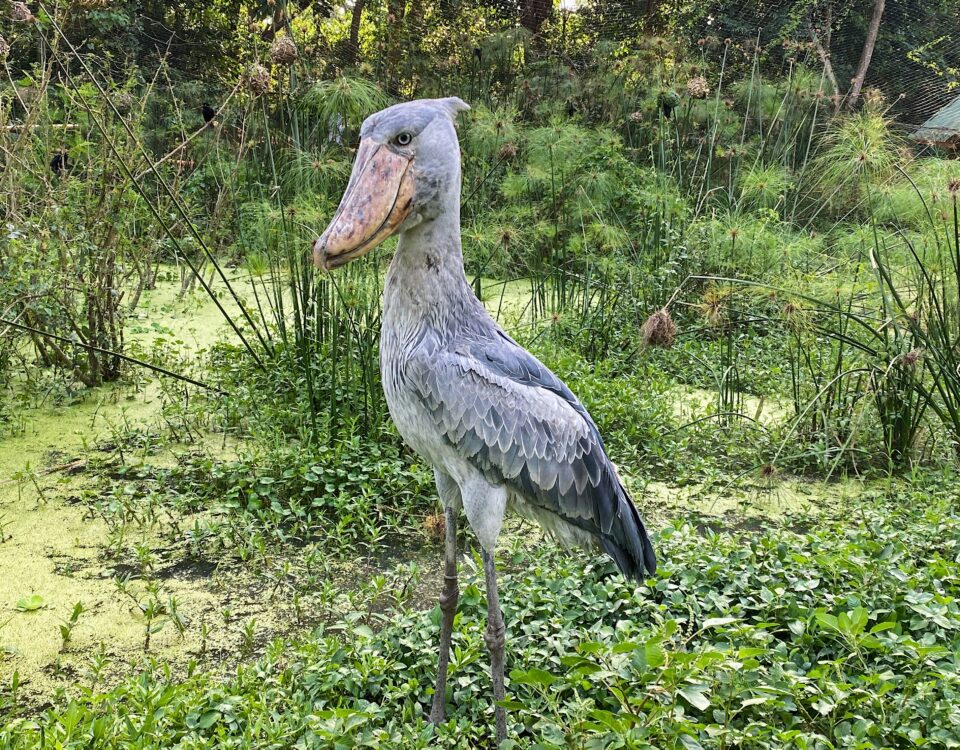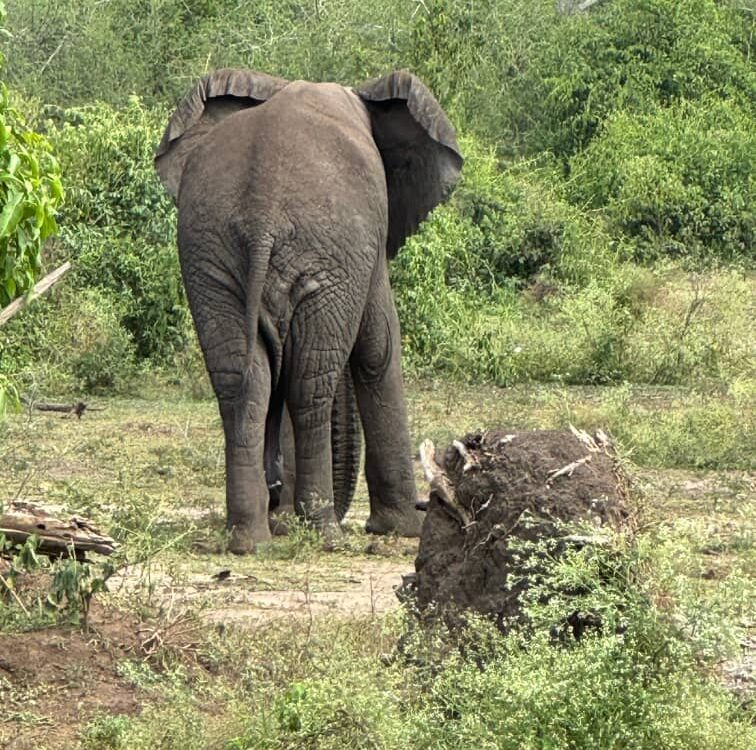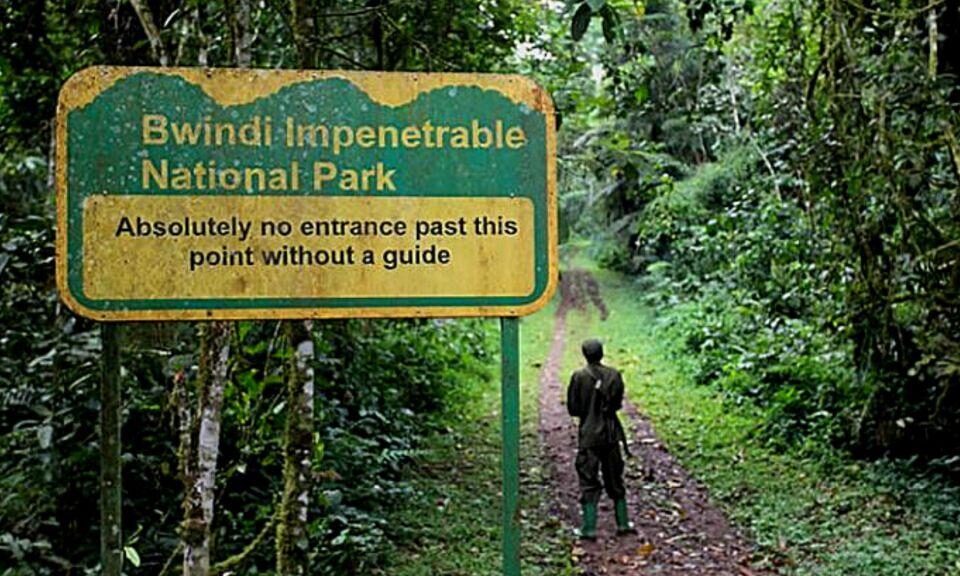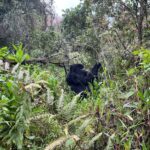
5 Days Uganda Gorilla Safari from Kigali
October 6, 2025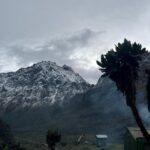
Hiking Mount Rwenzori in October
October 6, 2025Which park has tree-climbing lions in Uganda?
Queen Elizabeth National Park in Uganda is famous for its tree-climbing lions. Uganda is known for its breathtaking landscapes, diverse wildlife, and rich cultural history. Among its many natural attractions, this park is a top choice for wildlife lovers and adventure enthusiasts. One of its most unique features is the presence of tree-climbing lions, making it an exceptional place for wildlife watching. This article highlights the wonders of Queen Elizabeth National Park, particularly its tree-climbing lions, rich biodiversity, and the diverse experiences available to visitors.
An insight into Queen Elizabeth National Park
Established in 1952, Queen Elizabeth National Park spans approximately 1,978 square kilometres (764 square miles) in the western part of Uganda. It lies at the base of the Rwenzori Mountains and is bordered by the Albertine Rift Valley to the west. The park’s landscape is a remarkable blend of savannah, wetlands, forests, and crater lakes, providing a diverse habitat for a wide variety of flora and fauna.
Queen Elizabeth National Park is the second-largest national park in Uganda and is part of the larger Queen Elizabeth Biosphere Reserve. It is home to over 600 species of birds and a plethora of mammals, including elephants, buffalo, hippos, and the elusive tree-climbing lions, which have become a significant draw for tourists.
The Unique Tree-Climbing Lions
One of the most intriguing aspects of Queen Elizabeth National Park is the unique behavior of its tree-climbing lions. Unlike their counterparts in other parts of Africa, these lions have adapted to climbing trees —a behaviour thought to serve multiple purposes. Observations suggest that climbing helps lions escape the heat of the day, avoid ground-level pests, and even stalk prey from an elevated position.
The tree-climbing lions of Queen Elizabeth are primarily found in the Ishasha sector of the park, characterised by its abundance of acacia and fig trees. The lions have been known to perch on branches, lounging in the shade or engaging in social interactions. This behavior has captivated wildlife photographers and tourists, making Ishasha a top destination for lion sightings. Research suggests that this climbing behaviour may also be a result of the park’s unique ecosystem. It features a high density of prey and a complex predator-prey dynamic. The availability of large trees provides the lions with a strategic advantage, allowing them to observe their surroundings and plan their next move.
While the tree-climbing lions are a unique attraction, they are also a reminder of the challenges faced by wildlife in the region. Habitat loss, poaching, and human-wildlife conflict pose significant threats to their survival. Conservation efforts in Queen Elizabeth National Park focus on protecting wildlife and their habitats while promoting sustainable tourism practices. The Uganda Wildlife Authority collaborates with local communities to promote awareness of the importance of wildlife conservation and to mitigate conflicts.
Biodiversity in Queen Elizabeth National Park
Queen Elizabeth National Park is renowned for its rich biodiversity, which encompasses a diverse range of habitats that support a wide array of species. The park is divided into several distinct ecosystems, each contributing to its overall biodiversity and richness.
Mammals
In addition to the famous tree-climbing lions, the park is home to over 95 species of mammals, including:
African Elephants: These gentle giants roam the park in large herds, often found near water sources.
Buffalo: Large herds of African buffalo can be seen grazing in the savannah.
Hippos: The park’s numerous lakes and rivers provide an ideal habitat for hippos, which can often be seen lounging in the water.
Leopards: Although elusive, leopards can sometimes be spotted resting in trees or hunting at night.
Birdlife
Birdwatching is another highlight of a visit to Queen Elizabeth National Park. With over 600 recorded species, the park is a paradise for bird enthusiasts. Some notable species include:
African Fish Eagle: Known for its distinctive call, this bird can often be seen near water bodies.
Great Blue Turaco: A striking bird known for its vibrant colors.
Flora
The park’s vegetation is as diverse as its wildlife. It features various ecosystems, including grasslands, wetlands, and forests. The acacia and fig trees that provide the perfect resting spots for tree-climbing lions also support a variety of bird species and other wildlife.
Activities in Queen Elizabeth National Park
Visitors to Queen Elizabeth National Park can enjoy a range of activities that allow them to connect with nature and experience the park’s beauty firsthand.
Game Drives: One of the most popular ways to explore the park is through guided game drives. These excursions offer opportunities to observe a diverse range of wildlife, including elephants, buffalo, and, of course, the famous tree-climbing lions. Early morning and late afternoon are the best times for game drives. Animals are more active during these cooler parts of the day.
Boat Safaris: A boat safari on the Kazinga Channel offers a unique perspective of the park’s wildlife. The channel connects Lake Edward and Lake George. A boat trip offers close encounters with hippos, crocodiles, and a diverse array of bird species. This relaxing experience allows visitors to appreciate the park’s natural beauty from the water.
Nature Walks: For those looking for a more immersive experience, guided nature walks are available. These walks provide an opportunity to explore the park on foot. It allows visitors to observe smaller wildlife and learn about the local ecosystem from knowledgeable guides. Walking through the park offers a unique perspective, highlighting the intricate relationships between the flora and fauna.
Cultural Experiences: Queen Elizabeth National Park is not just about wildlife. It is also a gateway to experiencing the rich culture of the local communities. Visitors can engage with the Bakonzo and Basongora people, learning about their traditions, crafts, and way of life. Cultural tours can include visits to local markets, traditional dances, and interactions with community members.
How to get to Queen Elizabeth National Park.
Queen Elizabeth National Park is accessible from various parts of Uganda. The nearest major city is Kampala, approximately a 7-hour drive away. Visitors can also fly into Entebbe International Airport and take a domestic flight to Kasese, followed by a short drive to the park.
Accommodation in Queen Elizabeth National Park
The park offers a range of accommodation options, from luxury lodges to budget-friendly campsites. Staying within or near the park enhances the wildlife experience, allowing for early morning game drives and easy access to activities.
What is the best time to see tree-climbing lions in Uganda?
The best time to visit Queen Elizabeth National Park is during the dry seasons. The season run from June to September and December to February. During these months, wildlife is easier to spot, and the weather is generally pleasant.
Why not take a safari with us and see the tree-climbing lions of Uganda?
Queen Elizabeth National Park is a treasure trove of natural beauty and wildlife diversity. This makes it a must-visit destination for anyone traveling to Uganda. The park’s famous tree-climbing lions are just one of the many attractions that draw visitors from around the globe. Whether you are interested in game drives, birdwatching, cultural experiences, or simply soaking in the stunning landscapes, Queen Elizabeth National Park offers something for everyone. As you plan your visit, remember to respect the delicate ecosystems that make this park a true gem of Uganda and its conservation spirit.

